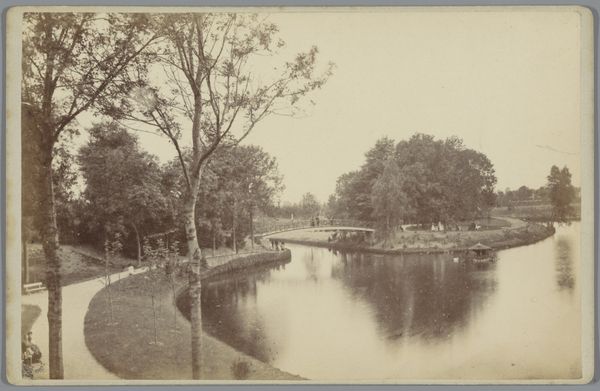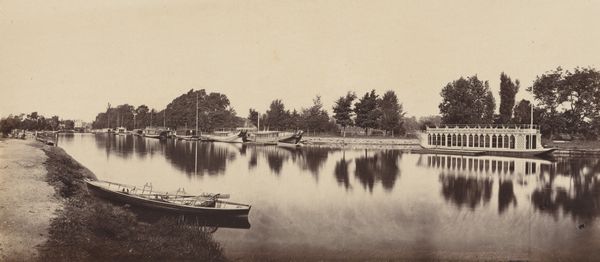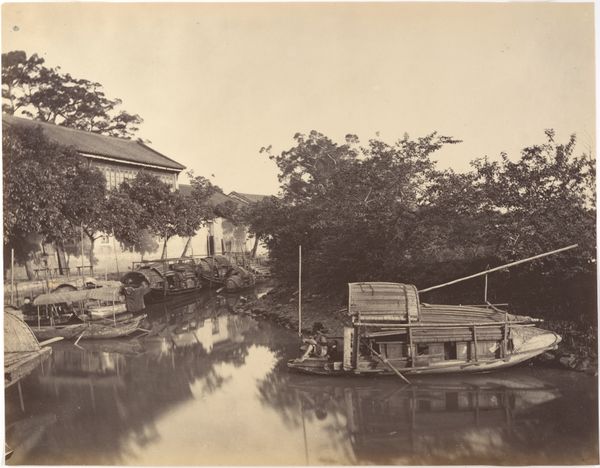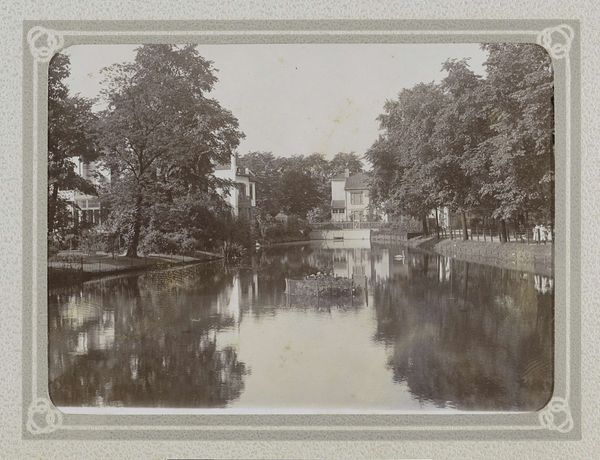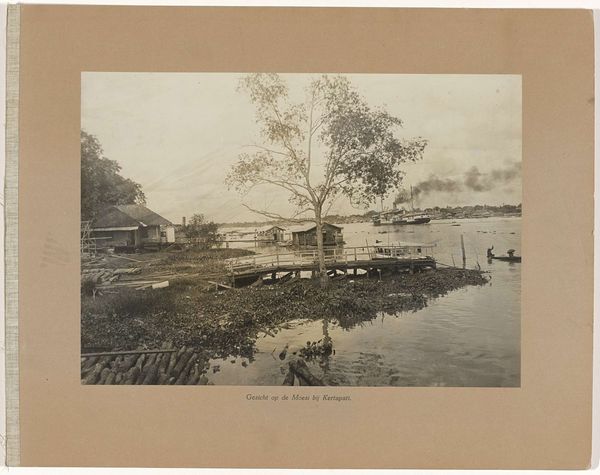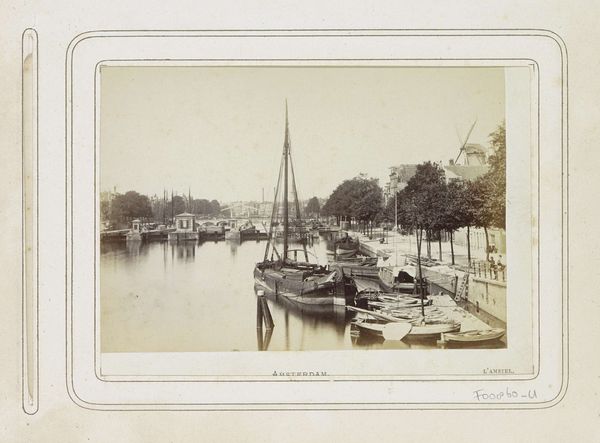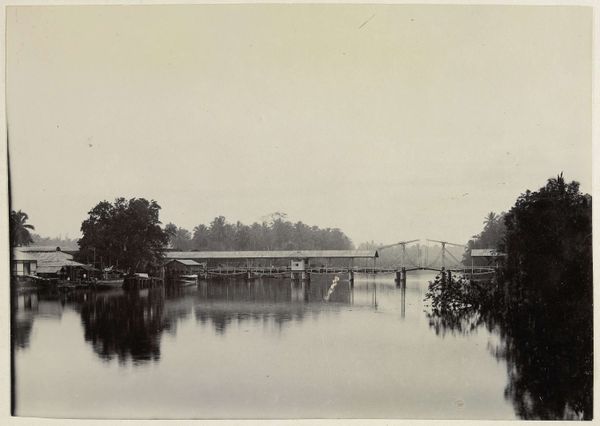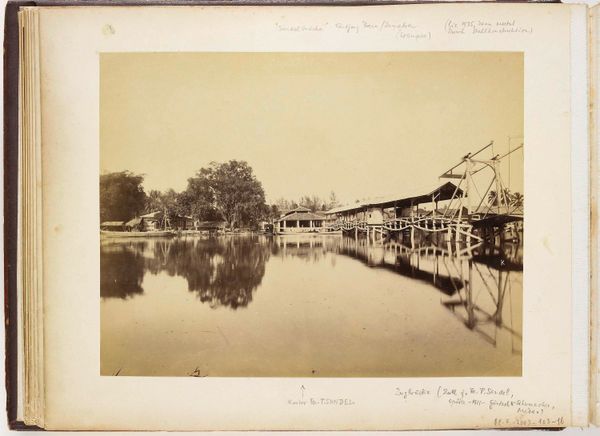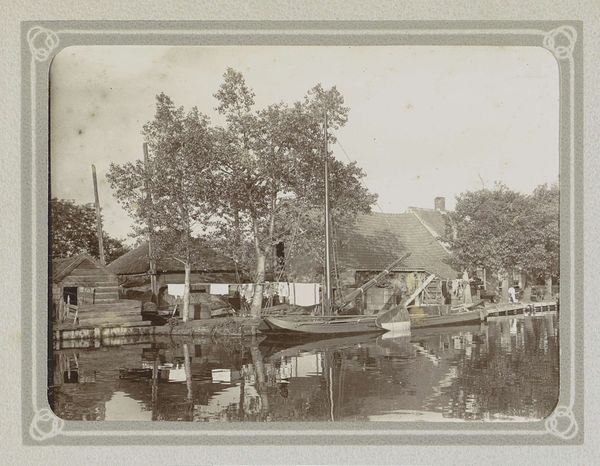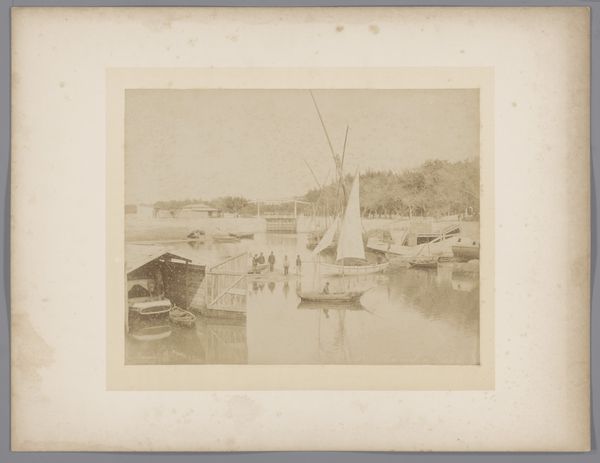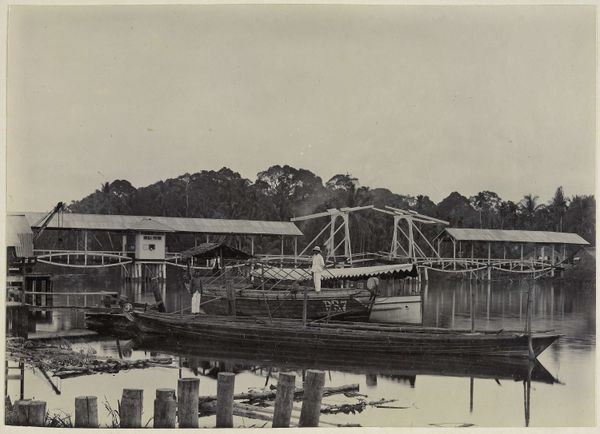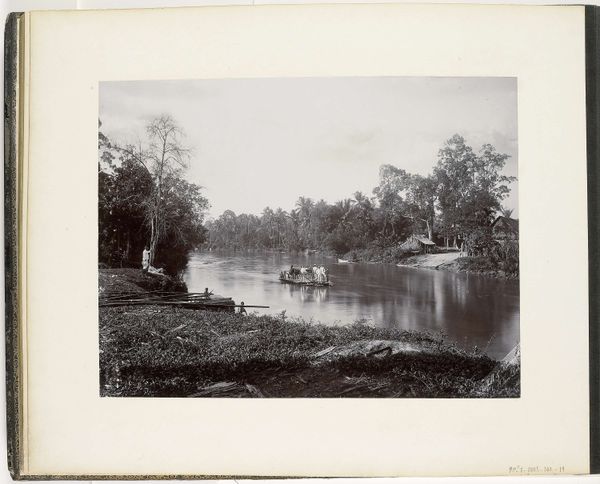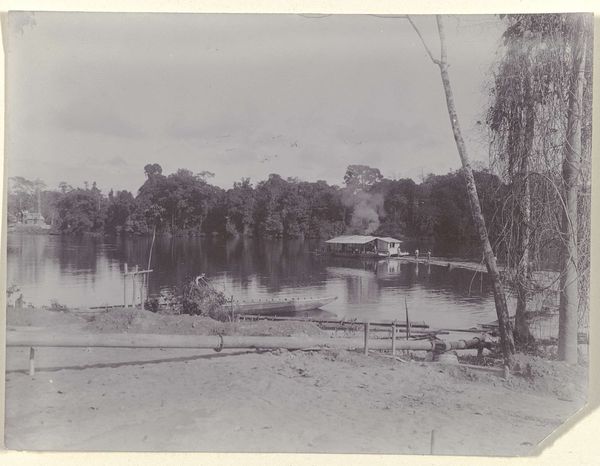
Paul Sandel in zijn stoomboot met op de achtergrond de Sandelbrug en op de voorgrond twee Chinese bedienden, Tandjong Poera, Langkat Sumatra c. 1890 - 1900
0:00
0:00
photography, albumen-print
#
portrait
#
landscape
#
photography
#
orientalism
#
albumen-print
#
realism
Dimensions: height 235 mm, width 312 mm
Copyright: Rijks Museum: Open Domain
Curator: Immediately, I'm drawn to the stillness, the reflection on the water’s surface creates a perfect mirroring effect of the Sandelbrug in the distance. It is formally very striking. Editor: The Rijksmuseum holds this albumen print titled "Paul Sandel in zijn stoomboot met op de achtergrond de Sandelbrug en op de voorgrond twee Chinese bedienden, Tandjong Poera, Langkat Sumatra" attributed to Heinrich Ernst & Co., circa 1890-1900. Curator: Yes, the very precise construction of the Sandelbrug in the background anchors the photograph. But the real intrigue lies in the placement of the figures, they are posed with an almost performative quality. Note how the two Chinese servants in the foreground are deliberately placed to frame Paul Sandel who is on a steam boat. The figures seem positioned to direct the viewer's gaze, inviting closer examination. Editor: Absolutely, the social dynamic here is palpable. This photo really highlights the colonial power structure and its impact on the local workforce in Sumatra. Albumen printing processes like this were not simply artistic but complex industrial processes that required the labour of many. Consider the resources needed: the eggs for the albumen, the chemicals, the distribution networks…it's all very revealing. Curator: It's difficult to ignore the visual hierarchy that has been created, how the bridge seems to dominate the background while those employed serve in the immediate foreground— the light itself seems to sculpt them with varying intensity depending on their function. Editor: I agree that visual imbalance represents real power dynamics. But it also underscores the networks of people involved in the production of commodities like rubber, tobacco, and other materials being exploited by the Dutch colonial powers in Sumatra at this time. The photographic material itself becomes implicated. Curator: It's the delicate balance of light, composition, and the calculated arrangement of the figures in space, though, that holds my attention. I find myself thinking about visual grammars—the image offers a clear statement despite being understated. Editor: It's an understated yet highly charged statement. This image, beautiful as it is, makes me reflect on colonial practices. Thank you for guiding me in interpreting the layers within. Curator: And thank you, this discussion brought forth so much of what is implicit in the scene.
Comments
No comments
Be the first to comment and join the conversation on the ultimate creative platform.
